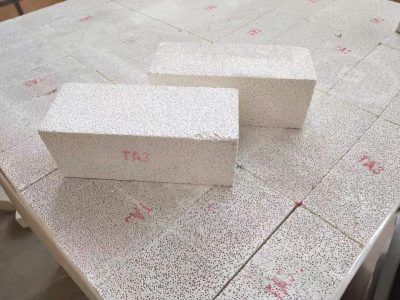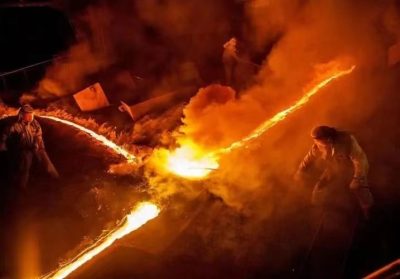Refractories play an indispensable role in our lives. Whether it is blast furnace smelting, glass manufacturing, or ceramic production, it is inseparable from these magical materials. So, what are the types of refractories? What about their performance?

PART 01
What are the refractories?
Refractories usually refer to inorganic non-metallic materials that can withstand high temperatures above 800 ° C. They cover not only natural ores, but also a variety of products carefully crafted by special processes. These materials exhibit excellent mechanical properties and excellent volumetric stability at high temperatures, making them core components in a wide range of high-temperature equipment. No matter in which high temperature operating environment, refractories play an indispensable role in ensuring the stable operation and safe production of equipment.
PART 02
What kinds of refractories are there?
1, acid refractories, usually refer to those with silicon dioxide (SiO2) and other acidic oxides as the main component of the refractory. These materials include siliceous , semi-siliceous , fused quartz and recombined fused quartz refractory, etc., the silica content is usually between 65% and 80%, and some even higher, reaching more than 93%. The main feature of acid refractories is that they can resist the erosion of acid slag at high temperatures, but they are easy to react with alkaline slag. This kind of material is mainly composed of silicic acid or aluminum silicate, which is easy to generate salt under high temperature and alkali action, so it is named. Acid refractories are widely used, especially in the metallurgical industry, where they are used to make a variety of refractory bricks, such as silicon bricks and clay bricks. These refractory bricks are resistant to acid slag erosion at high temperatures and are indispensable materials for high-temperature equipment such as industrial furnaces.
2, alkaline refractory materials, usually refer to those with magnesium oxide or magnesium oxide and calcium oxide as the main components of the material. These materials not only have a very high refractoriness, but also exhibit excellent resistance to alkaline slag erosion. Some examples we are familiar with include magnesia brick, magnesia chrome brick, magnesia magnesia brick, magnesia aluminum brick, dolomite brick and magnesia olivine brick. Because of their unique properties, these materials have been widely used in basic steelmaking furnaces, non-ferrous metal smelting furnaces and cement kilns, and play an indispensable role.
3, aluminum silicate refractory, this material to SIO2-A12O3 as the main component, according to its A12O3 content, we can subdivide it into three categories: first is semi-siliceous, its A12O3 content between 15-30%; The second is clay, whose A12O3 content is in the range of 30-48%; Finally, there is high aluminum, and the A12O3 content in this category exceeds 48%. This classification helps us to more precisely understand and select refractories suitable for specific application needs.
4, casting refractories, refers to the use of a specific process will be mixed ingredients at high temperature melting, then pouring and cooling molding, and finally produced with a specific shape of refractory products. For example, the electric fused zirconium corundum refractory brick commonly used in glass kilns is a typical representative of this process. With this melting and casting technology, we are able to obtain high-performance, precisely shaped refractories to meet the harsh requirements of a wide range of high-temperature industrial environments.
5, neutral refractory material, refers to the high temperature environment with acidic or alkaline slag are not easy to produce significant chemical reaction materials. Such materials include, but are not limited to, carbon refractories, chromium refractories, and even, in some cases, high aluminum refractories are also included in this category.
6, special refractories is a new inorganic non-metallic material, its birth is based on the deep accumulation of traditional ceramics and conventional refractories.
7, amorphous refractory material, by refractory aggregate, powder and a certain proportion of the binder or specific admixtures mixed, can be used directly, can also add appropriate amount of liquid deployment after application. This new refractory does not need to be calcined, and its refractoriness reaches at least 1580 ° C, showing excellent high temperature resistance.
PART 03
What refractories are often used?
Our widely used common refractories include silicon bricks, semi-silicon bricks, clay bricks, high alumina bricks and magnesium bricks. In the field of special materials, we often use high-performance materials such as AZS bricks, corundum bricks, and directly bonded magnesium-chromium bricks. In addition, silicon carbide bricks, silicon nitride bonded silicon carbide bricks, as well as nitrides, silicides, sulfides, borides, carbides and other non-oxide refractories are also highly respected. At the same time, refractory materials such as calcium oxide, chromium oxide, alumina, magnesium oxide, beryllium oxide also play an important role in specific applications. In order to meet the needs of heat insulation, diatomaceous earth products, asbestos products and insulation panels and other thermal insulation refractory materials are also our common choice.
In terms of amorphous refractories, we commonly use bushing materials, refractory ramming materials, refractory castables and so on. In addition, refractory plastics, refractory mud, refractory spray filler, refractory casting material, refractory coatings and lightweight refractory castables also occupy a place in daily applications. At the same time, materials such as clay and ceramic valves also play an indispensable role in specific occasions.

In practical applications, the selection and use of refractory materials is a profound knowledge, which requires us to consider various factors comprehensively to ensure the smooth progress of industrial production.
